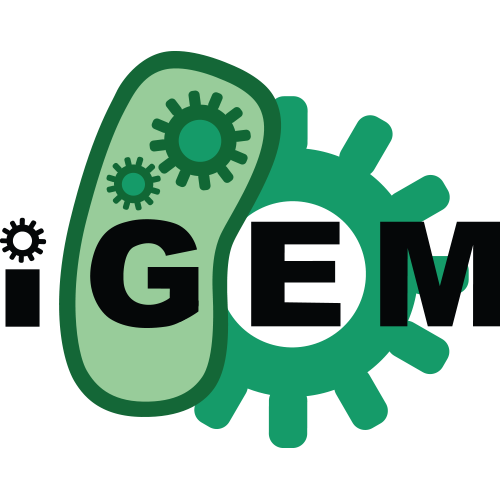Source:
Generated By: https://synbiohub.org/public/igem/igem2sbol/1
Created by: Stefan Robert Marsden
Date created: 2015-09-03 11:00:00
Date modified: 2015-09-18 04:28:25
pRha + CsgA_Mfp3_His fusion protein
| Types | DnaRegion |
| Roles | CDS Coding |
| Sequences | BBa_K1583105_sequence (Version 1) |
Description
CsgA is a protein monomer which can aggregate to form amyloid nanowires in natural biofilms taken from E.coli K-12 MG1655. Inspired by mussels, the Mfp3 (mussel foot protein) has high adhesive properties towards wet polar surfaces.By creating a fusion protein, the adhesive properties of the mussel foot protein is combined with the formation of bacterial nanowires.The design originates from "Strong underwater adhesives made by self-assembling multi-protein nanofibres" C.Zhong, T.Gurry, A.Cheng, J.Downey, Z.Deng, C. Stultz, T.Lu, Nature Nanotechnology, 2014, 9, 858-866.
Notes
A mutation in CsgA had to be introduced to remove a PstI restriction site. This was done without changing the protein sequence and a codon optimizer was used to ensure high expression in E.coli.Source
This DNA was synthesized. The design was based on the paper "Strong underwater adhesives made by self-assembling multi-protein nanofibres".[1]1. C.Zhong, T.Gurry, A.Cheng, J.Downey, Z.Deng, C. Stultz, T.Lu, Nature Nanotechnology, 2014, 9, 858-866.
The CsgA sequence originates from the genomic DNA of E. coli K-12 MG1655 (http://www.ncbi.nlm.nih.gov/gene/949055).
| Access | Instance | Definition |
| public public public public public public public public public | BBa_K1583062 BBa_K914003 BBa_K1583063 BBa_K1583061 BBa_K1583062 BBa_K1583014 BBa_K1583012 BBa_K1583011 BBa_K1583059 | BBa_K1583062 BBa_K914003 BBa_K1583063 BBa_K1583061 BBa_K1583062 BBa_K1583014 BBa_K1583012 BBa_K1583011 BBa_K1583059 |
